I particularly like this time of the year, witnessing the vast array of glorious autumn colours on show during October and November. This vast display of colour usually lasts about eight weeks and is stimulated by a change in day length.
Deciduous trees offer a final touch of drama to the landscape with their leaves turning shades of golden yellow, orange and red, before falling. So-called ‘autumn colours’ (yellow carotenes and red and pink anthocyanins) are present in their leaves all year round - we just don’t see them because they’re hidden by green chlorophyll.

Autumn colours
However, when day length starts to decrease in late summer, production of chlorophyll slows down and eventually stops. The green colour fades from the leaves, revealing glorious yellows, oranges, reds and pinks.
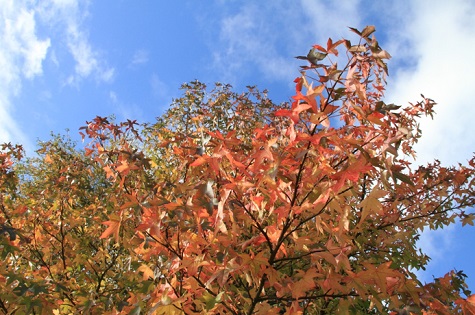
Liquidambar styraciflua
Last week, I visited several public parks and open spaces including Shugborough Hall, a National Trust property in Staffordshire, where a walk around the grounds enabled me to view the wonderful array of mature deciduous trees going through this annual autumn show, before they lose their leaves.
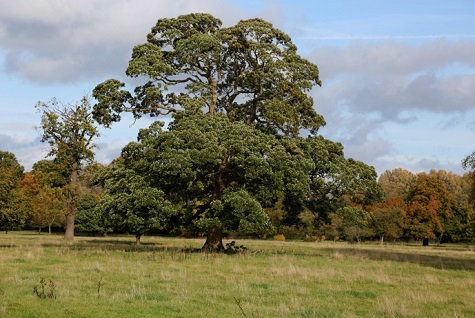
Mature trees changing colour at Shugborough Hall
This time of the year also sees gardeners and turf professionals starting their daily or weekly task of clearing up leaves from their playing surfaces.
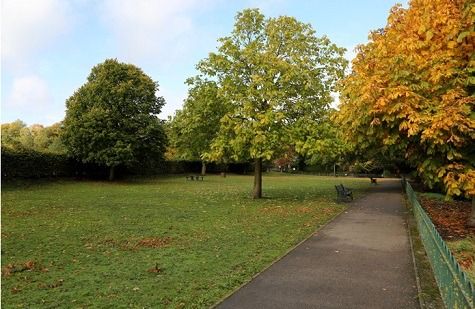
Elmore Park
From my own working experiences, I spent many hours raking leaves into piles and chucking them into a trailer with leaf boards - for the youngsters among you, they were little more than two bits of rubber, occasionally plastic or wood, and often an old cardboard box, that extended the size of your hands to allow you to pick up as much as possible in one go!

Combined with the raking, it was back-breaking, time-consuming work, requiring many man hours over a period of about six weeks every autumn. No such things as blowers, sweepers or vacs back then, perhaps with the exception of the Billy Goat, which first came to market in 1969 and was essentially the first commercial lawn vacuum. 50 years on the Billy Goat is still being produced and has remained a popular leaf clearing machine for the turf grass industry.
Leaf collection is one of those tasks that must be done - whether on grass or artificial, the club car park or the steps leading to the toilet, - they simply need to be cleared away. And all the while the grass refuses to stop growing, winter renovations are still to be done and there's a million and one other things on your 'to do' list.
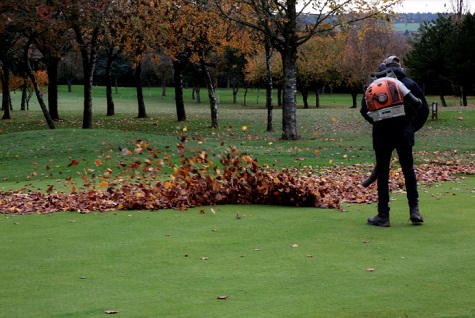
Therefore, it is not surprising that manufacturers set about the task of mechanising this work. Today there's a myriad of machines available for turf professionals to blow, suck, sweep, vacuum and clean up unwanted surface debris.
The trick is finding one to suit your working requirements in terms of performance, size, labour resources and cost that fits the working conditions you need it to cope with.
However, the topography, size and site-specific facility’s needs will also have an influence on the type and size of machine to use. There is a plethora of handheld, bespoke stand alone or tractor mounted or trailed debris sweeper or vacuum collectors to help us clear up leaves at this time of the year.
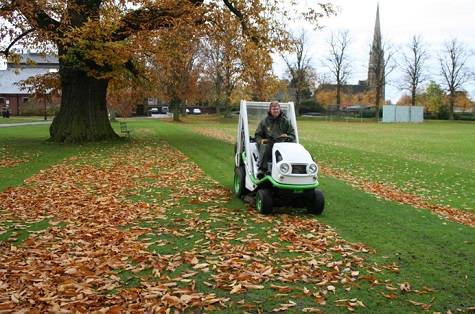
As for portable handheld machines, nearly every conceivable amenity and turf industry manufacturer now produce some type of hand held device, both petrol and battery powered. With the likes of STIHL, Husqvarna, Echo, EGO, Etesia, Makita leading the way on choice and performance.
As for larger capacity products the likes of Trilo, Wessex, Redexim, Overton, Votex, Estesia, Iseki, Kersten, Amazone, Pinnacle Power, and many other leading manufacturers now provide a wide range and choice of sweepers, blowers and vacuum collectors for large areas.

As a landscape gardener, one of my most used tools is my STIHL handheld BG56C blower - a godsend for cleaning up after undertaking maintenance tasks.
Golf clubs in particular have for many years invested thousands of pounds on larger capacity sweepers and blowers to keep their playing surfaces free of debris. With the ability to blow or vacuum surface debris from fairways, tees and greens.
However, we must also be mindful that these leaves (leaf litter) provide many benefits when left in situ. This is borne out when leaves are seen carpeting the floors of our forests and becoming an integral part of a natural cosystem, returning nutrients to the soil through the action of a multitude of microbes and invertebrates, retaining rainwater, slowing runoff, protecting soil and roots from erosion and temperature extremes.
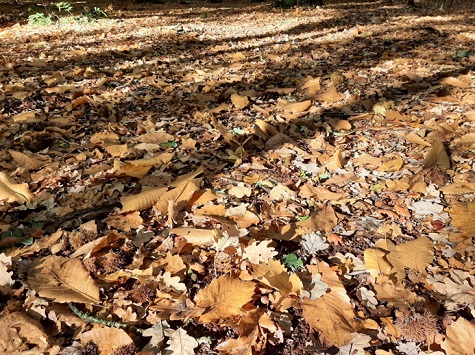
Leaf litter is one of the essential building blocks for developing healthy soils and maintaining the nutrient cycle in a forested ecosystem.
Not only does it provide nutrients, soil temperature moderation and many other benefits, but it also provides habitat for numerous organisms and microorganisms which help sustain animal and bird populations.

So, there are many opportunities for us to leave or collect this leaf litter to enhance our soils. We have for many years composted leaf litter in compost bays and bins and after turning and adding other waste materials we can produce a useful soil enhancer.
Whether we collect or leave these leaves, we must value the opportunity of using this annual free commodity (leaf litter) for ever improving our soils and enhancing our landscape.
On a final note, this week I shall be attending SALTEX on Wednesday and Thursday at the NEC and I am looking forward to meeting many fellow professionals and colleagues who work in our diverse sports turf and amenity industry.